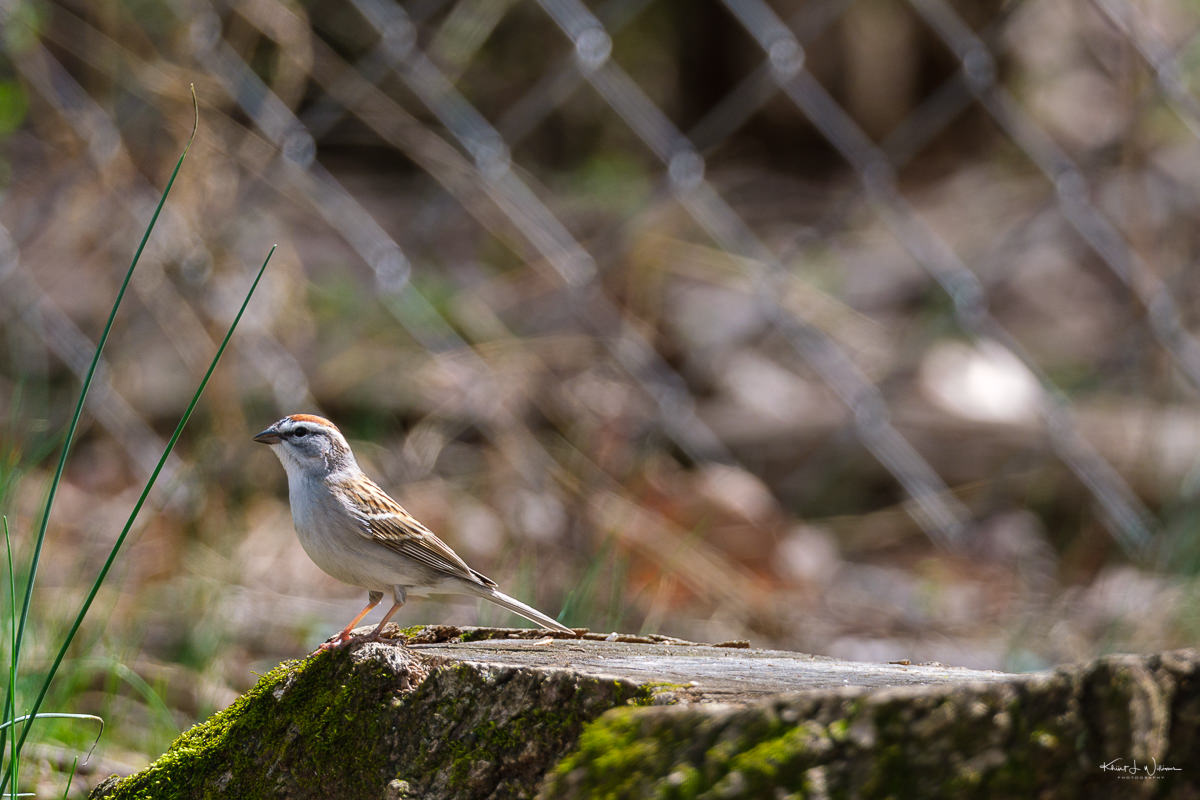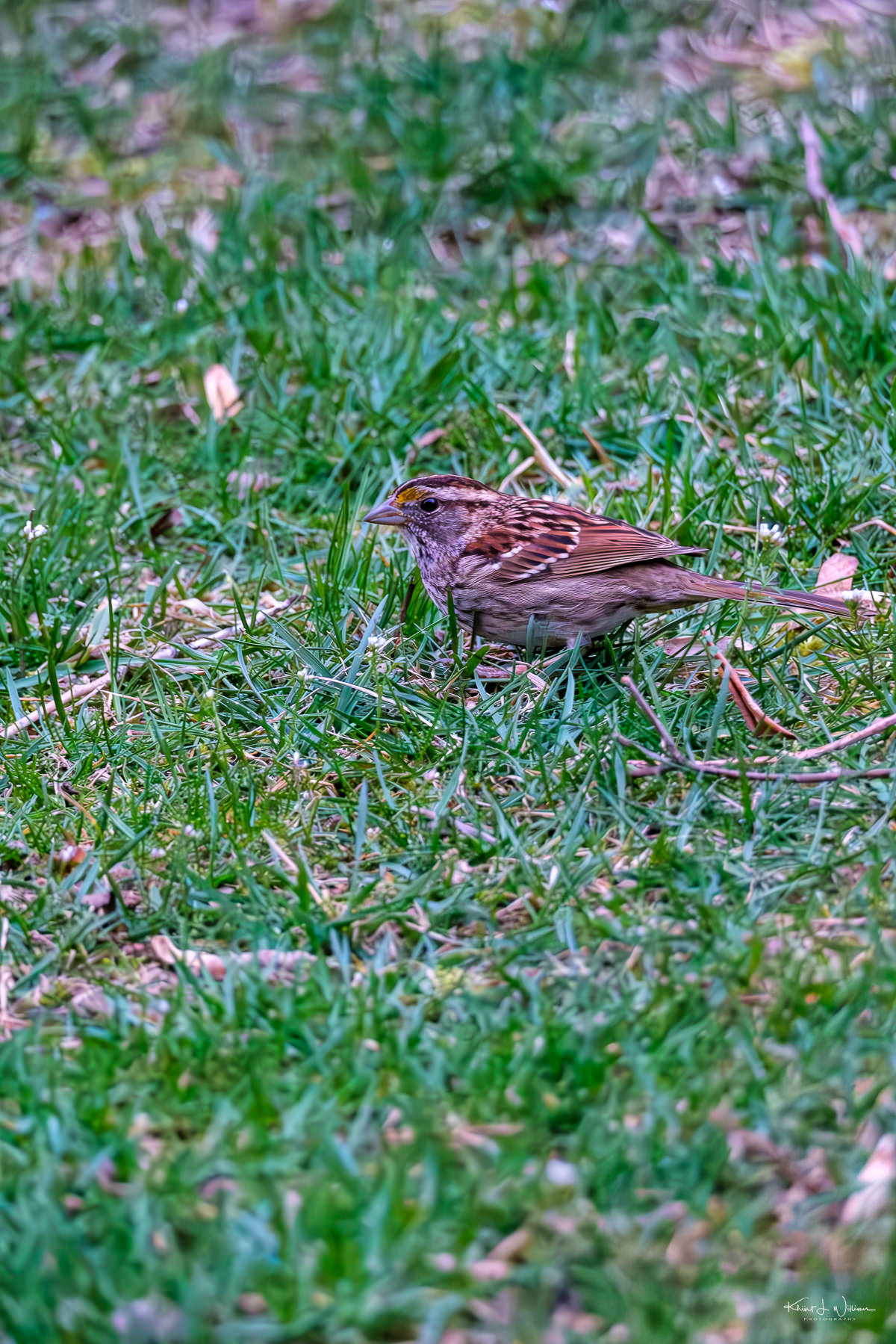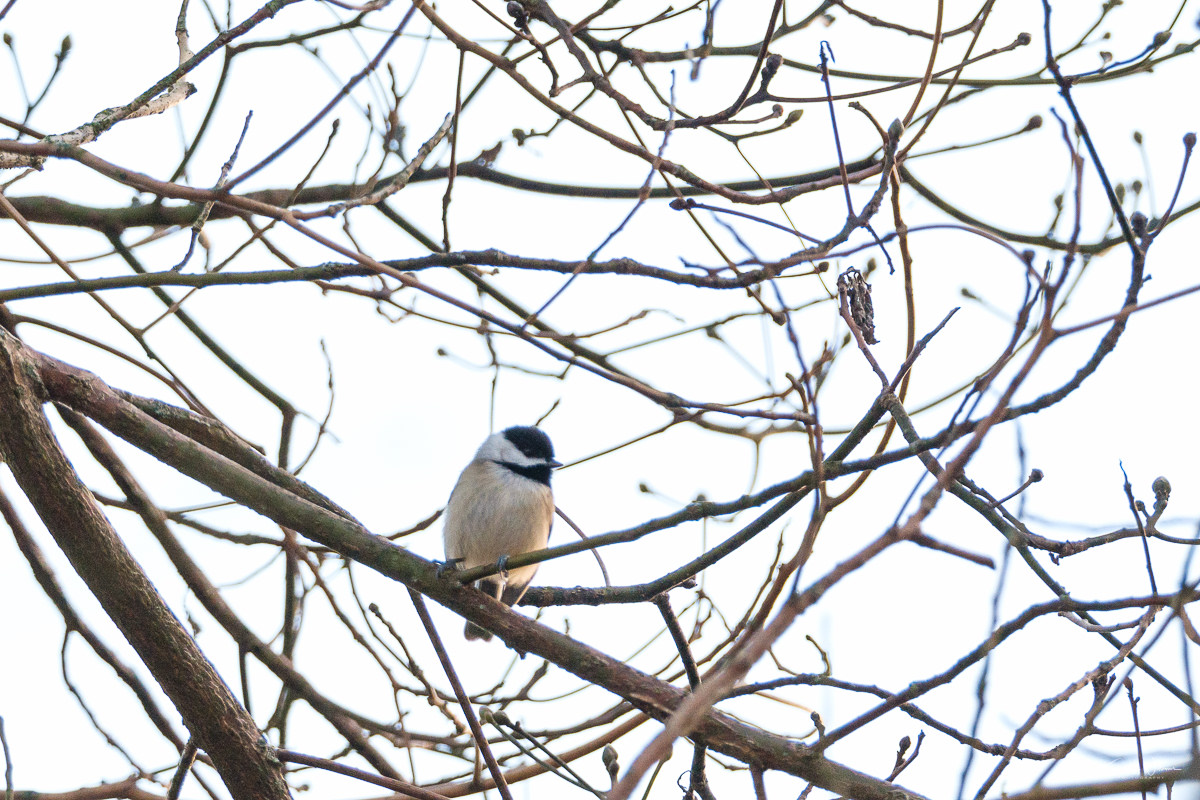It was midday and the sun was shining. After feeding Sir Alphonso Mango, I heated a slice of pepperoni pizza. I poured a can of Coca-Cola, watching as it cascaded over a glass half-filled with glistening crushed ice. I sat outdoors, able to hear and see birds fluttering in the nearby trees.
I recorded a few minutes of bird calls on the Merlin app, which indicated that some of the birds were Tufted Titmouse, Blue Jay, and Chipping Sparrow. I could now add the Chipping Sparrow to my life list, but I wanted a photograph. I popped inside to grab my X-T3 and XF150-600mmF5.6-8 R LM OIS WR.
As I bit into the salty fat of the pepperoni pizza, a Chipping Sparrow landed on a branch of the Sassafras tree near where I sat on the small deck. I balanced the familiar weight of the camera and lens in my hands, managing to get a photograph of the underbelly and the head, but I wanted something better.
My patience was rewarded at the end of my lunch break when a Chipping Sparrow landed on the dead tree stump next to the juniper. This time, I could see the earthy tones and subtle iridescence of its feathers.




